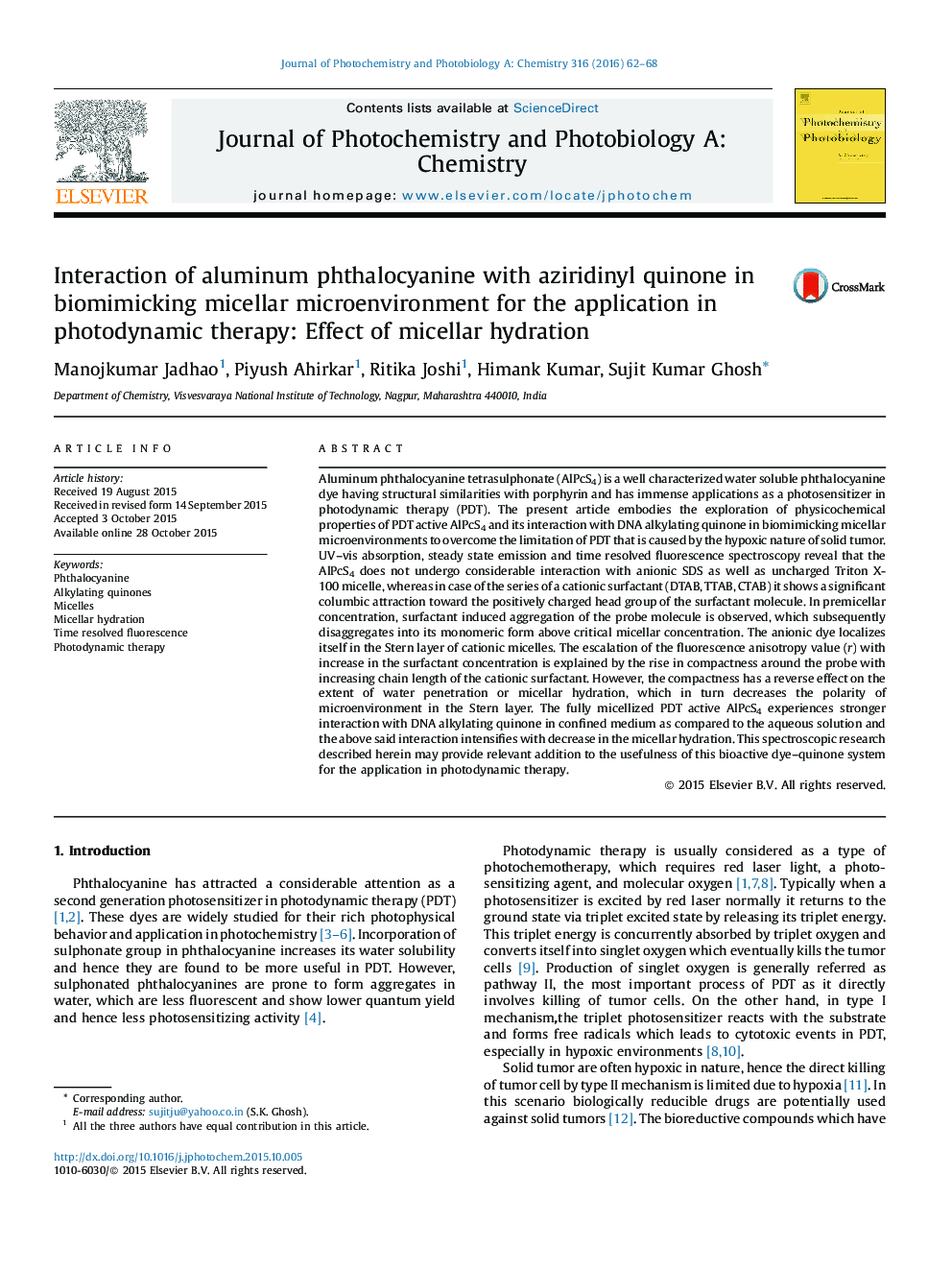| کد مقاله | کد نشریه | سال انتشار | مقاله انگلیسی | نسخه تمام متن |
|---|---|---|---|---|
| 26290 | 43944 | 2016 | 7 صفحه PDF | دانلود رایگان |
• AlPcS4 undergoes significant interaction with cationic micelles only.
• Surfactant induced higher aggregates disaggregated into monomeric species above cmc.
• AlPcS4 localize itself in the Stern layer of cationic micelles.
• The compactness around the probe with increasing surfactant chain length is identified.
• AlPcS4 experiences stronger interaction with DNA alkylating quinone in confined media.
• The PDT active dye–quinone interaction intensifies with decrease in micellar hydration.
Aluminum phthalocyanine tetrasulphonate (AlPcS4) is a well characterized water soluble phthalocyanine dye having structural similarities with porphyrin and has immense applications as a photosensitizer in photodynamic therapy (PDT). The present article embodies the exploration of physicochemical properties of PDT active AlPcS4 and its interaction with DNA alkylating quinone in biomimicking micellar microenvironments to overcome the limitation of PDT that is caused by the hypoxic nature of solid tumor. UV–vis absorption, steady state emission and time resolved fluorescence spectroscopy reveal that the AlPcS4 does not undergo considerable interaction with anionic SDS as well as uncharged Triton X-100 micelle, whereas in case of the series of a cationic surfactant (DTAB, TTAB, CTAB) it shows a significant columbic attraction toward the positively charged head group of the surfactant molecule. In premicellar concentration, surfactant induced aggregation of the probe molecule is observed, which subsequently disaggregates into its monomeric form above critical micellar concentration. The anionic dye localizes itself in the Stern layer of cationic micelles. The escalation of the fluorescence anisotropy value (r) with increase in the surfactant concentration is explained by the rise in compactness around the probe with increasing chain length of the cationic surfactant. However, the compactness has a reverse effect on the extent of water penetration or micellar hydration, which in turn decreases the polarity of microenvironment in the Stern layer. The fully micellized PDT active AlPcS4 experiences stronger interaction with DNA alkylating quinone in confined medium as compared to the aqueous solution and the above said interaction intensifies with decrease in the micellar hydration. This spectroscopic research described herein may provide relevant addition to the usefulness of this bioactive dye–quinone system for the application in photodynamic therapy.
Surfactant induced aggregation behavior of AlPcS4 and its relevant interaction with DNA alkylating quinone that is controlled by micellar hydration.Figure optionsDownload as PowerPoint slide
Journal: Journal of Photochemistry and Photobiology A: Chemistry - Volume 316, 1 February 2016, Pages 62–68
